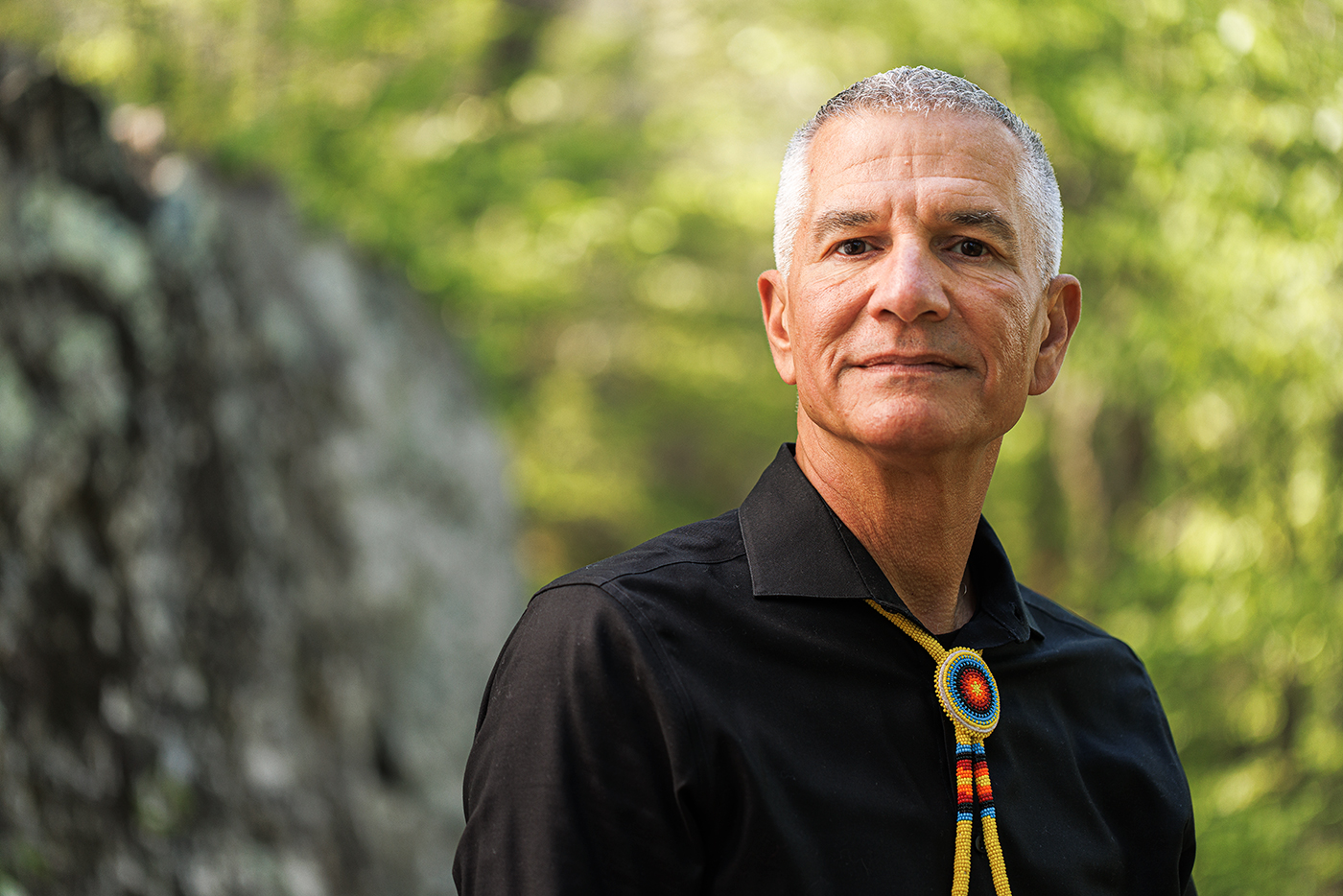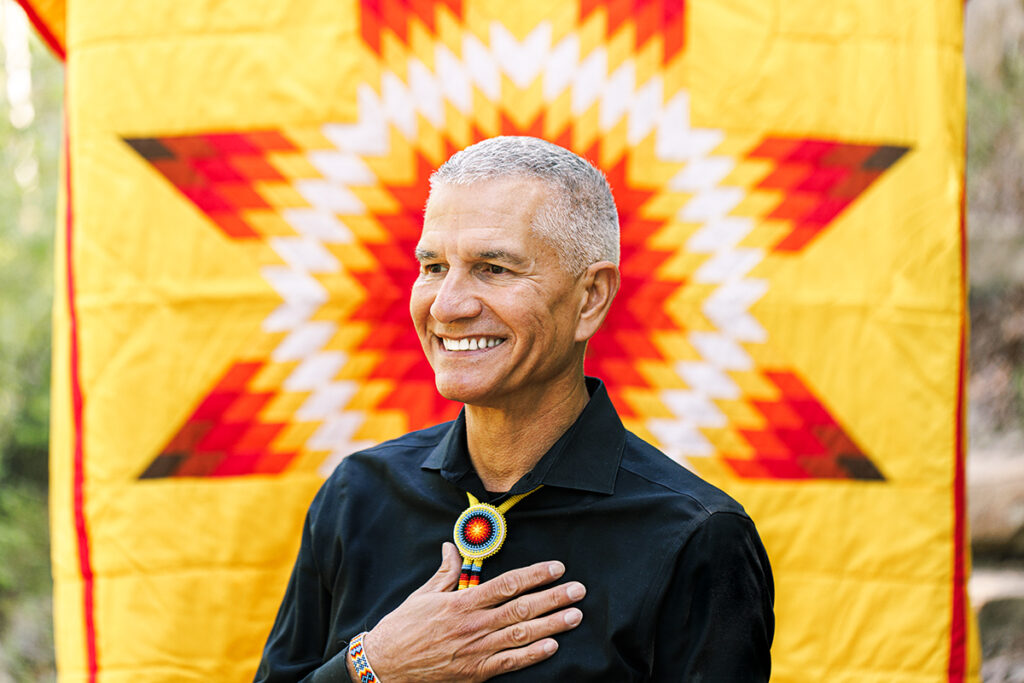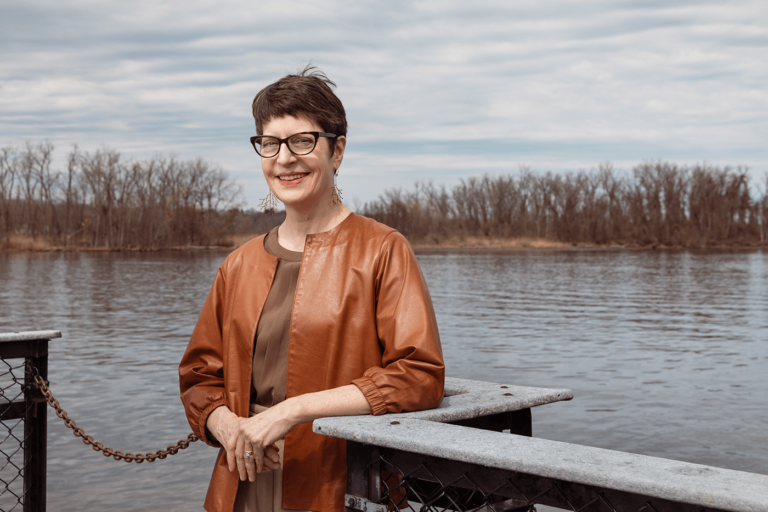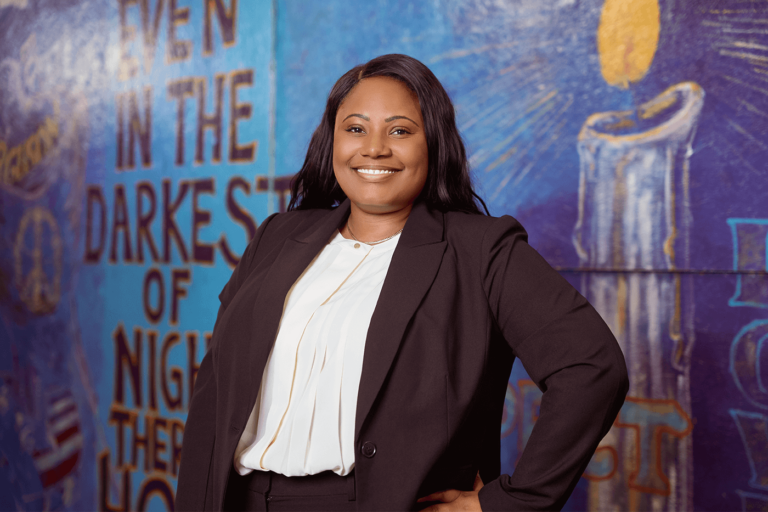From Buder scholarship to community champion
Kerry Bird, MSW ’98

By Zellie McClelland
Kerry Bird, MSW ’98, applied for a scholarship to study at the Brown School almost by chance — and last minute. While working in substance abuse prevention for the Commission of Indian Affairs, a colleague casually asked him to tag along for a lunch with a recruiter from the Kathryn M. Buder Center for American Indian Studies at WashU. Two months later, at a convention encouraging young Native leaders to pursue professional degrees, Kerry recalled that lunch. Inspired by the possibility of making a meaningful impact in his community, he rushed out of the meeting, found a pay phone, and called the recruiter. A month later, he was enrolled at Brown on a Buder Scholarship. That call set him on a leadership path. Today, he serves as the director of the North Carolina American Indian Heritage Commission.
What is the role of the North Carolina American Indian Heritage Commission?
A big part of what we do at the Heritage Commission is to educate the public about our experiences as Indians — who we are, where we are, that we’re still here, and how our past history has contributed to the state. As we approach America’s 250th next year, we may not celebrate, but we can commemorate. And we can share the many ways that Indians influenced the development of our country from the time we were first exposed to each other as distinct and varied cultures to where we are today. America didn’t develop into what it is now without our involvement. We share and promote that involvement.
You mention varied cultures. What can you tell us about North Carolina’s Indians?
What’s interesting about the tribes of North Carolina and the East Coast is that — because of our early contact with the Europeans — we were subject to a changing world for a longer time. Our languages were lost. We started living in houses. We began to farm differently. Our way of life fundamentally shifted because we were living with Europeans. And we were learning from them as much as they were learning from us.
While tribes in the Plains were still fighting on horseback in the 1800s, we were establishing a school. We had already become English-speaking and Christianized. This early assimilation has led to misconceptions from western tribes about our identity, but we see ourselves as the canary in the coal mine — we survived. Despite losing language, religion, and ceremonies, we found ways to protect our identity. Our transformation happened long before it did for tribes west of the Mississippi.
“The classes at Brown School really broadened my perspective on social work and its many career paths beyond direct practice and counseling. Social work prepares you for so much—human resources, management, leading a nonprofit or national organization, even working in tribal government or museums.”
Kerry Bird, Director of the North Carolina American Indian Heritage Commission
How do you protect Indian identity on the Commission, especially in light of this long history of assimilation?
Well, there are a few ways that we do this. We have a program to create large markers that are placed at important sites. Some are set up where tribes once lived, and others are used to recognize seminal events in our history. These markers then educate the public — and the Indian community itself — about our tribes’ geographical history, our physical place on the landscape.
Right now, we are having another bronze marker created to honor the Dunn Sit-Ins. Back in the early 1960s, the Coharie tribe* members who lived in Harnett County were required to bus their kids to the East Carolina Indian School, a 36-mile tip one-way. They decided that their children should be able to attend the local public school right in Dunn, North Carolina, which was an all-white school at the time. So, they staged a sit-in of their students that led to the school becoming integrated.
They broke segregation. And these were Indians in North Carolina. You don’t really think of civil rights efforts that involved anybody beyond African Americans and liberal Whites. But these are Indians who took that step. And we plan to set up a marker at the Dunn School to honor that important moment in our history and our contribution to the country.
Do you leverage your social-work advocacy in other ways?
Yes! In many other ways. Recently, I testified before the Senate Committee on Indian Affairs regarding critical issues surrounding Native education and the Federal government’s trust and treaty obligations to Native populations.
Native students in Bureau of Indian Education (BIE)-funded schools, as well as those in public schools serving Native populations, are subject to overcrowded classrooms and deteriorating
Facilities that do not respond to the needs of the local communities or cultures. In many instances, Federal policies do not sufficiently recognize or support the inherent sovereignty of Tribal Nations to manage their own educational systems, leaving Native communities at the mercy of bureaucratic red tape and restrictive federal oversight. This oversight results in a lack of agency. Native people’s education should instead be driven by cultural, linguistic, and community-specific priorities.

What specific requests did you make of Congress?
In my testimony, I urged the Committee to make meaningful educational investments in tribal education, to update outdated policies, and to recognize the inherent sovereignty of our Nations. This will require the federal government to prioritize funding and flexibility for BIE schools and Tribal Education Agencies and to protect the status of Native education programs across the government. It will also remove administrative barriers that hinder Native communities from full control of their educational system.
When you first began studying at WashU, did you envision pursuing Indian cultural preservation?
The classes at Brown School really broadened my perspective on social work and its many career paths beyond direct practice and counseling. Social work prepares you for so much—human resources, management, leading a nonprofit or national organization, even working in tribal government or museums. It’s such a broad and enriching field that it’s hard to say it specifically prepared me for this role. If I had been focused on counseling, I would have honed those skills, but my interest was in exploring possibilities—and I felt prepared to take on whatever came next. That confidence is what Brown gave me. And I believe my current work engenders a similar confidence — and pride — in the Indian community here in North Carolina.
* The Coharie are descendants of the Lumbees and other Siouan-speaking tribes that originally inhabited the Harnett and Sampson Counties in North Carolina
Powered by design, anchored in community
Having grown up in Atlanta, Angelyn Chandler, AB ’89, made it her goal to settle in a highly walkable city with robust public transportation. Upon finishing her graduate degree from Princeton University, she landed in New York
Building healthier communities
Growing up in the City of St. Louis, Doneisha Bohannon, MPH ’14, witnessed how neighborhoods shape health and opportunity. This upbringing, combined with her undergraduate studies in geography and sociology, motivated her to address disparities in her community.
Revolutionizing nutrition: The startup transforming vending machines with healthy choices
Back in 2013, Luke Saunders, AB ’10, founded Farmer’s Fridge, a start-up with a mission to make healthy food more accessible. Today, that company operates in more than 2,000 locations and has served 13+ million meals from its vending machines nationwide.
Grounded in global community
Claudia Romeu, AB ’08, grew up in Puerto Rico, where she was raised with strong values, including a deep sense of social responsibility toward others. At the same time, her upbringing was shaped by a relative lack of cultural diversity. Studying social anthropology at WashU helped open her eyes to other ways of living and the breadth of human experience.









